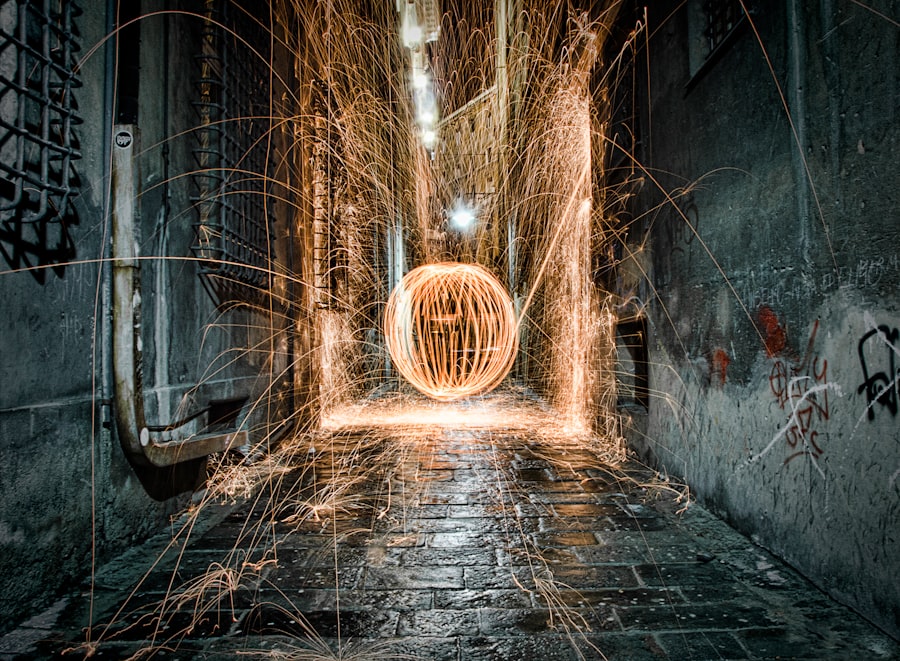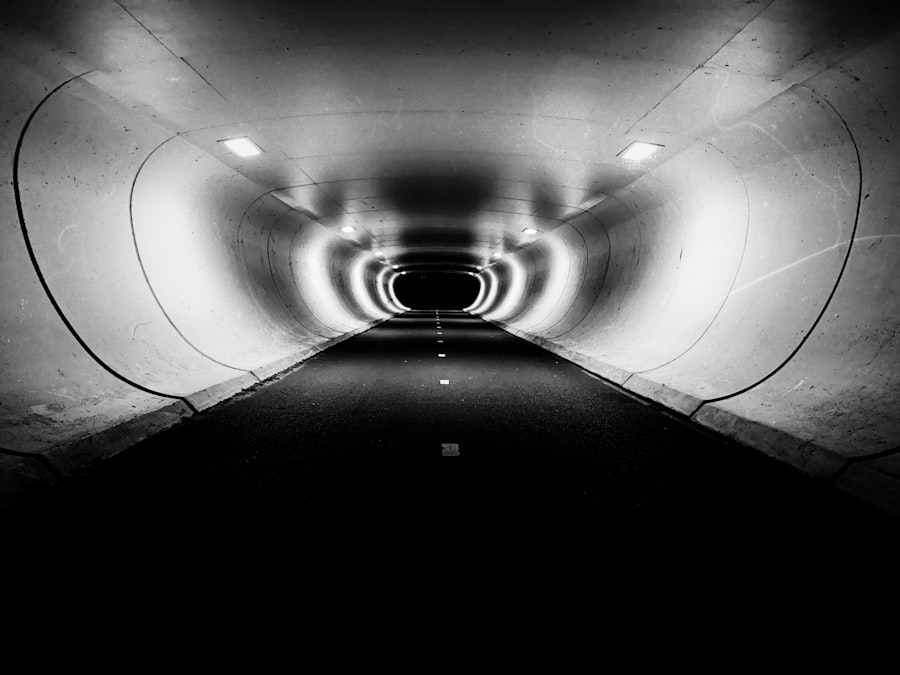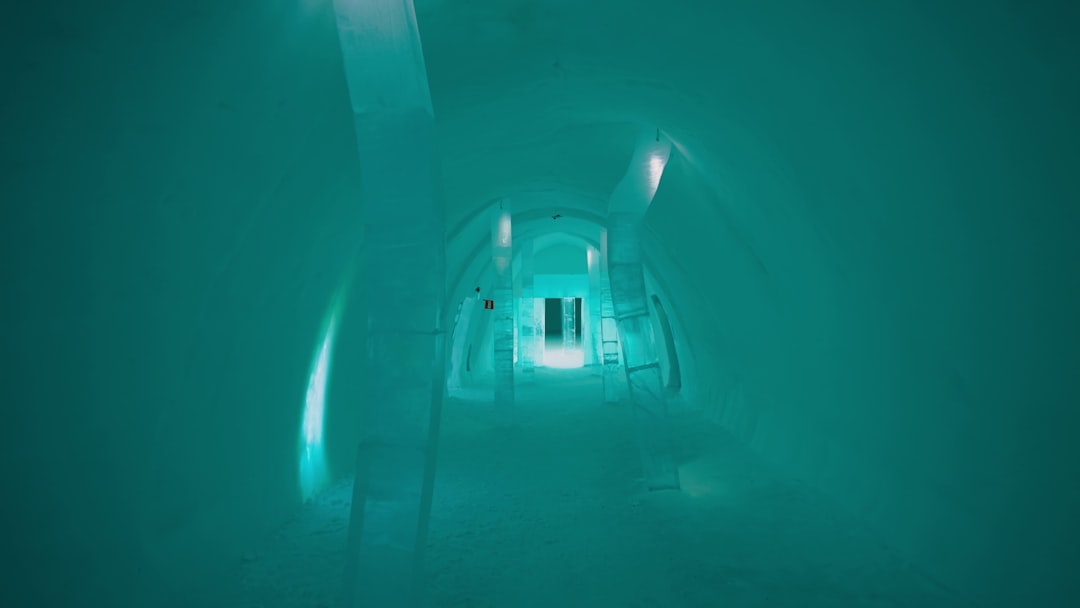Quantum tunneling is a fascinating phenomenon that arises from the principles of quantum mechanics, a branch of physics that describes the behavior of matter and energy at the smallest scales. Unlike classical physics, which operates under deterministic laws, quantum mechanics introduces a level of unpredictability and probabilistic behavior. At its core, quantum tunneling refers to the ability of particles to pass through potential energy barriers, even when they seemingly lack the energy to do so.
This counterintuitive behavior has profound implications across various fields, from nuclear fusion in stars to the functioning of modern electronics. The concept of quantum tunneling challenges traditional notions of how particles interact with energy barriers. In classical physics, a particle must possess sufficient energy to overcome a barrier; otherwise, it remains confined.
However, in the quantum realm, particles are described by wave functions that represent probabilities rather than definitive locations. This allows for the possibility that a particle can “tunnel” through a barrier, emerging on the other side without having traversed the space in between. As scientists continue to explore the implications of quantum tunneling, its significance in astrophysical phenomena, particularly in dead stars, becomes increasingly apparent.
Key Takeaways
- Quantum tunneling is a phenomenon in quantum mechanics where particles can pass through energy barriers that would be impossible to overcome according to classical physics.
- Dead stars, such as white dwarfs, neutron stars, and black holes, are remnants of massive stars that have exhausted their nuclear fuel and collapsed under their own gravity.
- Quantum tunneling plays a crucial role in the evolution and behavior of dead stars, influencing processes such as nuclear fusion, electron capture, and the emission of radiation.
- The quantum tunneling process involves the probabilistic passage of particles through energy barriers, allowing for the escape of particles from the dense cores of dead stars.
- Observing quantum tunneling in dead stars provides valuable insights into the fundamental nature of matter, the behavior of extreme environments, and the evolution of the universe.
Understanding Dead Stars
Dead stars are remnants of stellar evolution, representing the final stages in the life cycle of stars that have exhausted their nuclear fuel. These celestial bodies come in various forms, including white dwarfs, neutron stars, and black holes, each characterized by unique properties and behaviors. A white dwarf is the dense core left behind after a star like our Sun has shed its outer layers, while neutron stars are formed from the remnants of massive stars that have undergone supernova explosions.
Black holes, on the other hand, are regions of spacetime exhibiting gravitational forces so strong that nothing, not even light, can escape from them. The study of dead stars provides critical insights into the life cycles of stars and the fundamental processes governing the universe. As these stars evolve and ultimately die, they contribute to the cosmic landscape by dispersing elements into space, enriching the interstellar medium and facilitating the formation of new stars and planets.
Understanding the physical conditions and processes occurring within these dead stars is essential for comprehending not only their individual characteristics but also their broader impact on galactic evolution.
The Role of Quantum Tunneling in Dead Stars

Quantum tunneling plays a pivotal role in various processes associated with dead stars, particularly in their formation and eventual demise. In white dwarfs, for instance, quantum tunneling is crucial for electron degeneracy pressure, which counteracts gravitational collapse. As these stars cool and contract, electrons become increasingly confined within a small volume.
Quantum mechanics allows these electrons to occupy states that would be forbidden under classical physics, providing the necessary pressure to stabilize the star against gravitational forces. In neutron stars, quantum tunneling is equally significant. The extreme densities within these stars lead to conditions where neutrons are packed closely together.
Under such circumstances, quantum tunneling facilitates interactions between particles that would otherwise be impossible at lower densities. This process contributes to the unique properties of neutron stars, including their rapid rotation and strong magnetic fields. The interplay between quantum tunneling and the extreme environments of dead stars highlights the importance of quantum mechanics in shaping the universe’s most enigmatic objects.
The Quantum Tunneling Process Explained
| Concept | Explanation |
|---|---|
| Quantum Tunneling | The phenomenon where a particle passes through a potential energy barrier that it classically cannot surmount. |
| Barrier Height | The energy difference between the particle’s initial energy and the maximum energy it can reach within the barrier. |
| Transmission Probability | The likelihood of a particle tunneling through the barrier, which depends on the barrier width and height. |
| Applications | Used in tunnel diodes, scanning tunneling microscopy, and quantum computing technologies. |
To grasp the significance of quantum tunneling in dead stars, it is essential to understand how this process occurs at a fundamental level. Quantum tunneling arises from the wave-like nature of particles described by quantum mechanics. When a particle encounters a potential energy barrier, its wave function does not abruptly drop to zero at the barrier’s edge; instead, it gradually diminishes as it penetrates the barrier.
This means there is a non-zero probability that the particle can be found on the other side of the barrier. The likelihood of tunneling depends on several factors, including the height and width of the barrier and the energy of the particle. Generally, thinner and lower barriers increase the probability of tunneling occurring.
In astrophysical contexts, such as within dead stars, these barriers can represent various forces acting on particles under extreme conditions. The ability of particles to tunnel through these barriers enables processes like nuclear fusion in stellar cores and contributes to the stability of dense stellar remnants.
Observing Quantum Tunneling in Dead Stars
While quantum tunneling is inherently difficult to observe directly due to its microscopic nature, its effects can be inferred through various astrophysical observations. For instance, researchers study the emission spectra of white dwarfs and neutron stars to understand their internal processes better. The presence of certain elements and isotopes in these spectra can indicate how quantum tunneling influences nuclear reactions within these stars.
Additionally, gravitational wave observations provide another avenue for studying quantum tunneling in dead stars. When neutron stars collide or merge, they produce gravitational waves that carry information about their internal structure and dynamics. Analyzing these waves can reveal insights into how quantum tunneling affects particle interactions during such extreme events.
By piecing together data from multiple sources, scientists can build a more comprehensive picture of how quantum tunneling operates within dead stars.
Implications of Quantum Tunneling in Dead Stars

The implications of quantum tunneling extend far beyond individual dead stars; they resonate throughout astrophysics and cosmology. For instance, understanding how quantum tunneling facilitates nuclear fusion in stellar cores helps explain how elements are formed and distributed throughout the universe. This knowledge is crucial for comprehending stellar nucleosynthesis—the process by which stars create heavier elements from lighter ones—and its role in shaping galaxies.
Moreover, insights into quantum tunneling can inform theories about the ultimate fate of dead stars. For example, as white dwarfs cool over time, their internal processes may be influenced by quantum tunneling effects that dictate their rate of cooling and eventual crystallization into solid structures. Similarly, in neutron stars, understanding how quantum tunneling affects particle interactions can shed light on phenomena such as pulsar emissions and magnetic field generation.
Quantum Tunneling and Neutron Stars
Neutron stars represent one of the most extreme environments in the universe, where matter exists at densities surpassing that found in atomic nuclei. In such conditions, quantum tunneling plays a critical role in determining their properties and behaviors. The interactions between neutrons and other particles are heavily influenced by quantum effects, leading to unique phenomena such as superfluidity—a state where matter flows without viscosity.
For instance, during neutron star mergers, quantum tunneling can facilitate rapid changes in particle states that contribute to explosive events like kilonovae—powerful explosions resulting from merging neutron stars that produce heavy elements through rapid neutron capture processes. These events not only enrich the universe with heavy elements but also provide valuable observational data for studying fundamental physics.
Quantum Tunneling and Black Holes
Black holes represent another area where quantum tunneling has profound implications. While black holes are often associated with classical gravitational theories, quantum mechanics introduces complexities that challenge our understanding of these enigmatic objects. One significant aspect is Hawking radiation—a theoretical prediction suggesting that black holes can emit radiation due to quantum effects near their event horizons.
Quantum tunneling plays a crucial role in this process by allowing virtual particles to escape from just outside a black hole’s event horizon. This phenomenon suggests that black holes are not entirely black; instead, they may slowly lose mass over time through this radiation process. The implications of Hawking radiation extend beyond black holes themselves; they raise questions about information loss and the fundamental nature of reality as it relates to quantum mechanics.
Quantum Tunneling and the Evolution of Dead Stars
The evolution of dead stars is intricately linked to quantum tunneling processes that govern their internal dynamics and interactions with surrounding matter. As these stars transition from one phase to another—such as from main sequence to red giant or from supernova to neutron star—the role of quantum tunneling becomes increasingly significant. For example, during supernova explosions, quantum effects influence how energy is released and how elements are synthesized during these cataclysmic events.
Furthermore, as white dwarfs cool over billions of years, quantum tunneling affects their crystallization processes and eventual fate as they transition into cold stellar remnants known as crystallized white dwarfs. Understanding these evolutionary pathways requires a comprehensive grasp of how quantum mechanics shapes stellar behavior throughout their life cycles.
The Future of Quantum Tunneling Research in Dead Stars
As research into quantum tunneling continues to advance, scientists are poised to uncover new insights into its role within dead stars and beyond. Ongoing developments in observational techniques—such as gravitational wave astronomy and high-energy astrophysics—will enable researchers to probe deeper into the mysteries surrounding these celestial objects. By combining theoretical models with observational data, scientists aim to refine their understanding of how quantum tunneling influences stellar evolution and interactions.
Moreover, interdisciplinary collaborations between physicists and astronomers will likely yield innovative approaches to studying quantum effects in astrophysical contexts. As technology progresses and new discoveries emerge, researchers will continue to explore the intricate relationship between quantum mechanics and cosmic phenomena, shedding light on fundamental questions about the nature of matter and energy in the universe.
The Cosmic Significance of Quantum Tunneling in Dead Stars
In conclusion, quantum tunneling serves as a cornerstone for understanding various processes associated with dead stars—ranging from white dwarfs to neutron stars and black holes. Its implications extend beyond individual celestial objects; they resonate throughout astrophysics and cosmology by influencing stellar evolution, element formation, and even our understanding of fundamental physics itself. As researchers delve deeper into this captivating phenomenon, they uncover new layers of complexity that enrich our comprehension of the universe’s workings.
The cosmic significance of quantum tunneling cannot be overstated; it bridges the gap between microcosmic behaviors governed by quantum mechanics and macrocosmic phenomena observed across vast distances in space. By continuing to explore this intricate interplay between quantum effects and stellar dynamics, scientists will not only enhance our understanding of dead stars but also contribute to broader inquiries about the nature of reality itself—an endeavor that lies at the heart of modern scientific exploration.
Quantum tunneling plays a crucial role in the processes occurring within dead stars, particularly in the context of neutron stars and black holes. For a deeper understanding of how quantum mechanics influences stellar evolution and the behavior of matter under extreme conditions, you can read more in this related article on Freaky Science. This article delves into the fascinating implications of quantum tunneling in astrophysical phenomena, shedding light on the mysteries of the universe.
WATCH THIS! The Universe Will Die In Silence. This Is The Googol Year Timeline.
FAQs
What is quantum tunneling in dead stars?
Quantum tunneling in dead stars refers to the phenomenon where particles can pass through energy barriers that would be insurmountable according to classical physics. In the context of dead stars, quantum tunneling can play a role in processes such as nuclear reactions and the behavior of matter under extreme conditions.
How does quantum tunneling occur in dead stars?
In dead stars, such as white dwarfs or neutron stars, quantum tunneling can occur in processes such as nuclear fusion, where particles tunnel through the Coulomb barrier to initiate fusion reactions. Additionally, quantum tunneling can also play a role in the behavior of matter under the extreme pressures and densities found in these stellar remnants.
What are the implications of quantum tunneling in dead stars?
The implications of quantum tunneling in dead stars are significant for our understanding of stellar evolution and the behavior of matter under extreme conditions. Quantum tunneling can influence the rates of nuclear reactions and the overall dynamics of dead stars, impacting their evolution and eventual fate.
Can quantum tunneling in dead stars be observed or measured?
While quantum tunneling itself cannot be directly observed, its effects can be inferred through astrophysical observations and theoretical models. Scientists use a combination of observational data and theoretical calculations to study the role of quantum tunneling in dead stars and its impact on their behavior.
